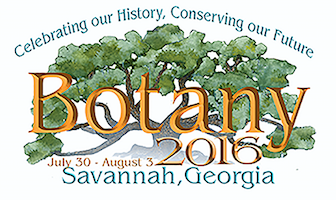| Abstract Detail
Paleobotany Matsunaga, Kelly [1], Smith, Selena [1], Manchester, Steven [2], Kapgate, Dashrath [3]. Revisiting Viracarpon, an enigmatic fossil monocot from the late Maastrichtian-early Danian Deccan Intertrappean Beds of India. The Deccan Intertrappean Beds of India host a rich and well-studied fossil flora, known from over 50 localities in western, central, and southeastern India. Plant fossils are permineralized in cherts and include the exquisitely preserved remains of algae, bryophytes, fungi, pteridophytes, conifers, and angiosperms. The cherts formed during quiescent periods between major basalt eruptions of the Deccan volcanic province during the Late Cretaceous to early Paleocene (Maastrichtian-Danian), at a time when the Indian subcontinent was geographically isolated and situated in the southern hemisphere tropics. The flora, in which angiosperms dominate, includes several monocotyledonous taxa for which systematic affinities remain elusive. One such fossil is Viracarpon, which comprises infructescences known from five localities in central India. Five species of Viracarpon have been described since this extinct genus was first documented over a century ago. However, opinions differ on the interpretation of morphology, whether all described species represent distinct taxa, and on family-level affinities. In the present study we reinvestigate the morphology of Viracarpon, aided by X-ray micro-computed tomography, in an effort to resolve its taxonomic affinities. In all species flowers/fruits are sessile and have a compact helical arrangement on the axis, forming alternating vertical rows. The axis contains scattered vascular bundles, supporting monocot affinities. The ovary is semicarpous to syncarpous, hexalocular, with a single seed per locule. At least two species can be distinguished, Viracarpon hexaspermum and Viracarpon elongatum¸ the latter having also been described under the name Shuklanthus superbum. The inflorescence axis in V. hexaspermum is more robust, 5–6mm wide and up to 3.5cm long, with 8–12 vertical rows of fruits (4-6mm wide, 5mm tall). In contrast, the axis of V. elongatum is 1.5–2mm wide, up to 6.8cm long, and bears 5–6 rows of fruits (~2mm wide, 1.5mm tall). The perianth is composed of six petals, which are positioned opposite the locules and are partially fused to the ovary, and ~6 free sepals. A central longitudinal ridge is present along the adaxial surface of the petals. It is vascularized and could represent the filament of an epipetalous stamen or staminode. At least in V. hexaspermum, this ridge and the adaxial surface of petals are densely hairy. Affinities with several angiosperm families have been proposed for Viracarpon and include Araceae, Cyclanthaceae, Moraceae, and Pandanaceae. Preliminary comparisons reveal no perfect match with any extant families, but the closest similarities are seen with Pandanaceae and multilocular members of Arecaceae.
Log in to add this item to your schedule
1 - University of Michigan, Earth and Environmental Sciences, 2534 CC Little Bldg, 1100 N University Ave., Ann Arbor, MI, 48109-1005, United States
2 - University Of Florida, Florida Museum Of Natural History, PO BOX 117800, Gainesville, FL, 32611, USA
3 - J.M. Patel College, Department of Botany, Bhandara 441904-M.S, India
Keywords:
India
monocot
fossil
Cretaceous
Viracarpon
Pandanaceae
Arecaceae.
Presentation Type: Oral Paper
Session: 5, Paleobotany Student Awards
Location: 204/Savannah International Trade and Convention Center
Date: Monday, August 1st, 2016
Time: 10:15 AM
Number: 5008
Abstract ID:206
Candidate for Awards:Maynard F. Moseley Award |



